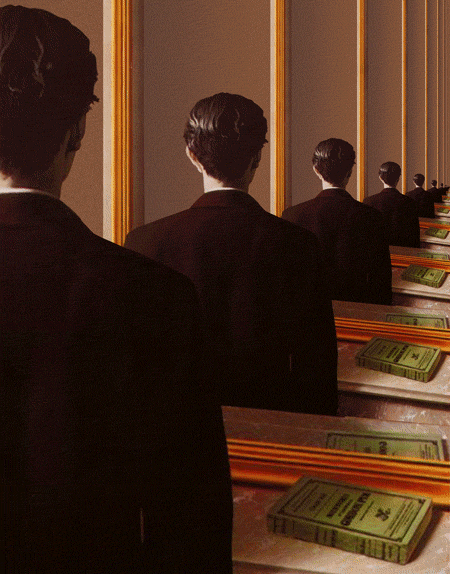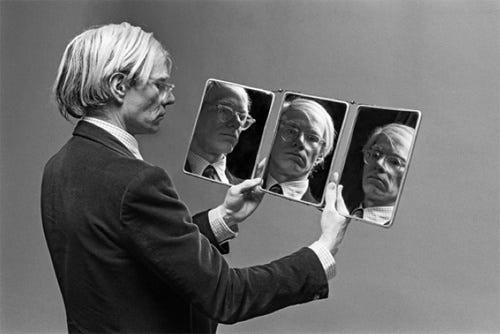When Repetition Replaces Identity
How signature style can become a trap, and how fluidity becomes mastery.
POSTURE is the exclusive syllabus on identity, aesthetic reinforcement, and the self-fulfilling nature of style.
How style scripts the self, and what happens when you break character.
I. Orientation
What if the version of you that gets dressed every morning is almost you, but not quite? What if the version of you, sleepy, half-dreaming, that stands in front of your mirror, or perhaps just pulls something on inside of your closet, is the version of you that operates in the in-between, a stand-in?
What if, what you believe to be your personal style is just a collection of habits, repeated over and over again, until they feel so natural you never second guess them?
Knowing what you’re going to put on every day can be comforting, stabilizing. Almost as comforting as cashmere, or terrycloth right out of the shower. Knowing, on any level, how you’re going to present yourself, is a very comfortable reality to live inside, because even when everything else can, or will be thrown into chaos, its something you can depend on. It’s a reflection you can trust. Comfort is a lot like nostalgia. It's charming, calming, and familiar, until you find it wrapped around your neck like a weight. Then, it’s no longer stabilizing, it’s keeping you somewhere you’ve already outgrown.
When you know your style like the back of your hand, it stops being personal. It becomes your performance, not necessarily of your taste, but of your control. So, the question isn’t whether you look good. It’s what are you’re trading for the comfort of being predictable? What are you avoiding by staying the same?
Because consistency is what remains when all forms of play and experimentation have run their course. When you look in the mirror, is this what you see?
II. Theory
We’ve been conditioned to believe that having a consistent aesthetic is a virtue.
It’s not. It’s repetition, rewarded by algorithmic feedback and social approval.
You scroll through your feed and see the same references, the same silhouettes, the same cover image duplicated across dozens of accounts. And one day, you catch yourself thinking…maybe I like it now.
That isn’t taste. That’s exposure.
We treat this aesthetic conformity as a virtue, you’re finally coming around, I knew you would get on board. It’s peer pressure masquarading as growth.
If your goal is to be admired for your style, prepare to be misunderstood. You are going to have to learn to live without the glory of positive reinforcement. You will have to endure the questioning looks, the head-to-toe appraisals. You’ll have to withstand the polite confusion of people who once thought they knew how to read you. You’ll hear your friends say, without judgment, but with concern, “Is that really what you’re wearing?”
And you’ll have to say yes, without needing to explain.
Because if you want personal style, understand this:
Consistency is not the same as control.
One is automatic. The other is intentional.
If you always look the same, there’s nothing left to recognize, just something to expect.
In the Style Alignment Chart, the appearance of a “fixed” personal style is most common in three archetypes:
The Familiar (Unconscious + Neutral) — when visual repetition becomes self-recognition, through repeated outfit sets and color palettes.
The Masked (Deliberate + Withdrawn) — when consistency is used to control how others perceive you, through repeating trends and aesthetics deemed popular.
The Grounded (Unconscious + Self-Assured) — when fluidity is possible, but rarely felt necessary.
Here’s the problem: when consistency is not challenged, it calcifies.
The Masked stops growing. The Familiar stops noticing. The Grounded stops choosing.
Each of these can eventually collapse into The Veiled (Unconscious + Withdrawn), where dressing is still habitual, but with no real feeling attached. That’s the cost of confusing aesthetic stability with aesthetic authorship.
To master your alignment, you must learn to evolve without disorienting yourself.




